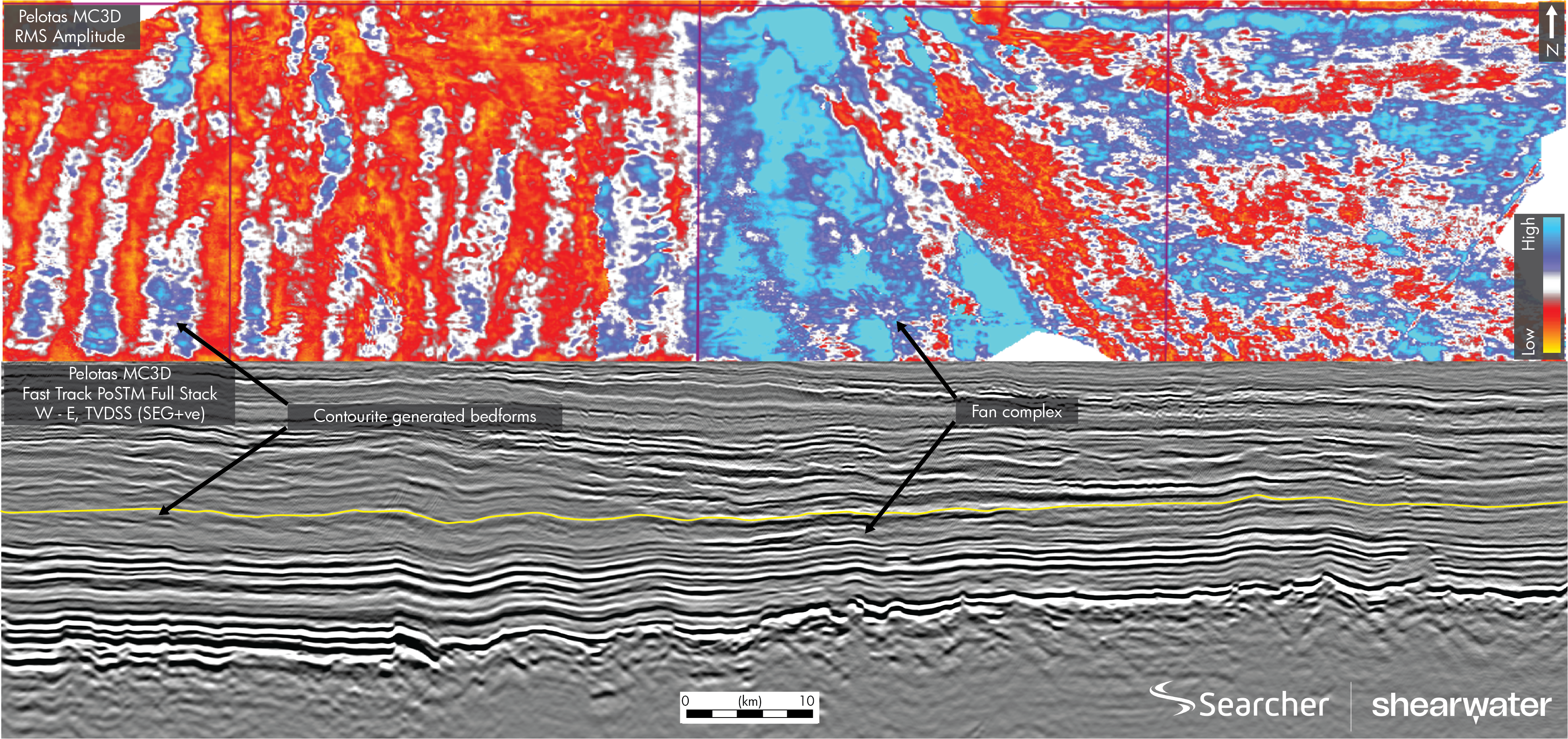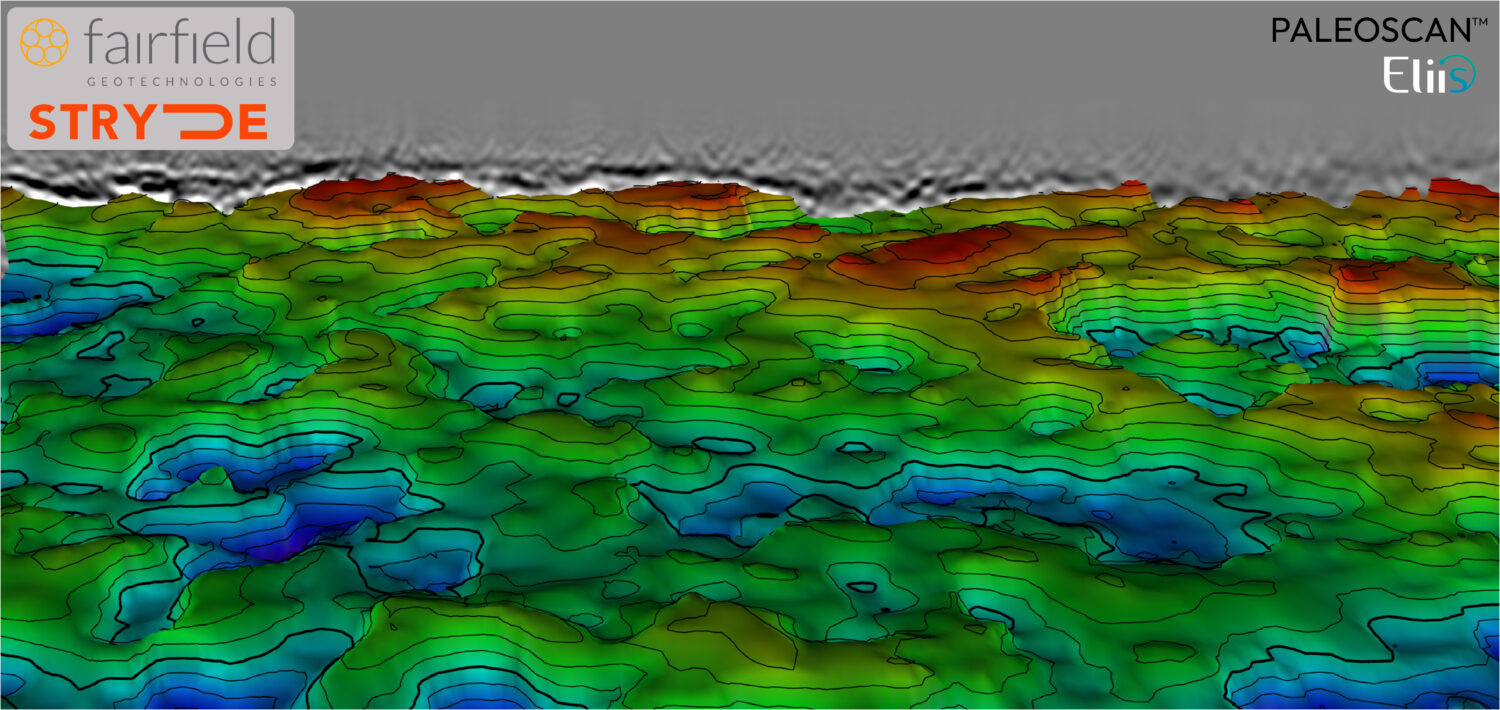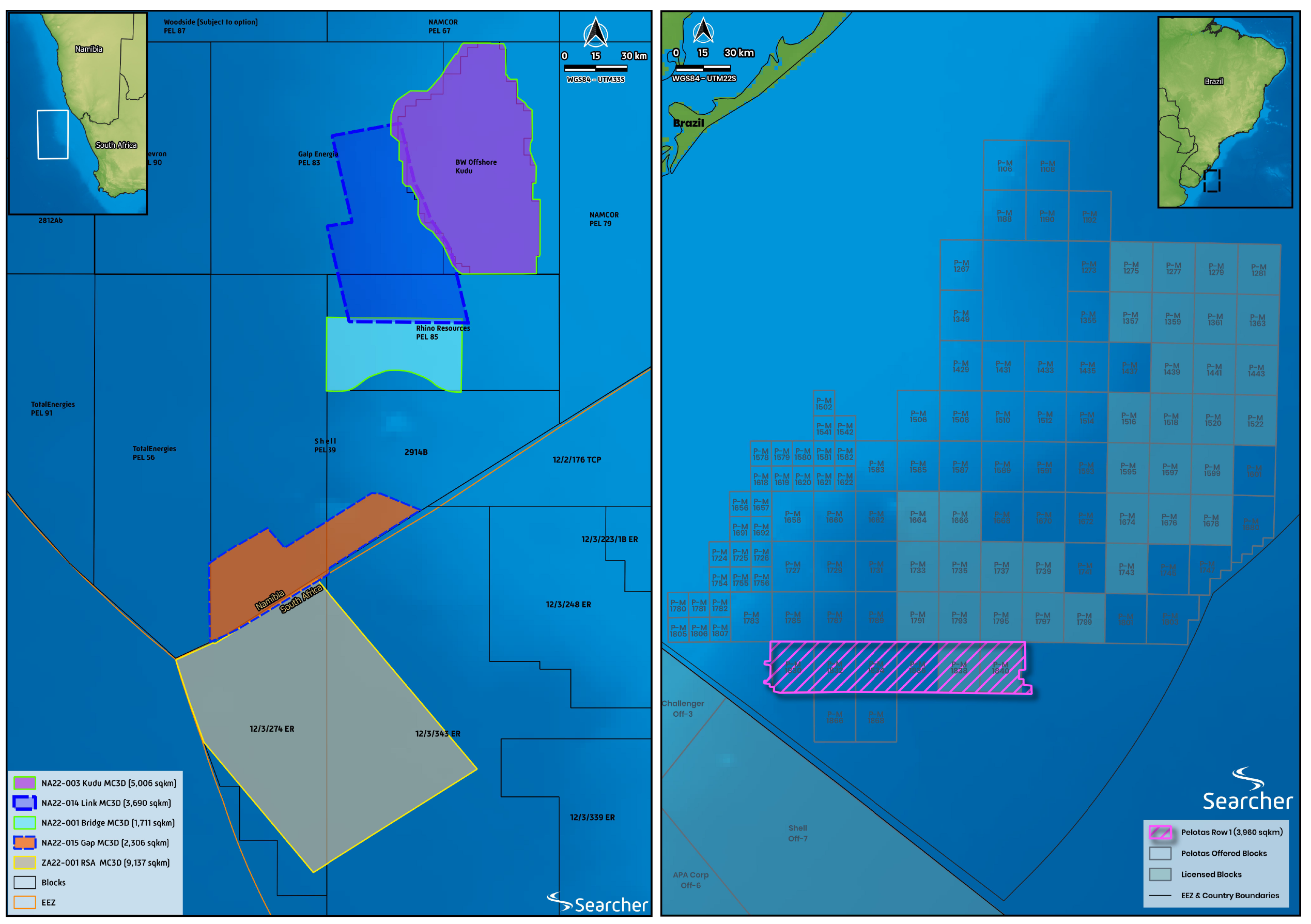
Contourites: When everything going sideways saves the day
Though complex in detail, hybrid systems become clearer at scale – modern 2D and 3D deepwater data is reshaping how we interpret and pursue deepwater reservoirs
Since 2022, all of the Multi-client 3D seismic acquired in the Orange Basin of Namibia and the Southern Pelotas Basins of Brazil (> 20,000 km2, Figure 1) have been acquired by Searcher, mostly with partner Shearwater, in response to recent exploration success in deeper water settings. This has revealed for the first time the seismic character and prospectivity of the different depositional systems generated by the interaction between turbidite and contourite current-related processes in these basins.
Seismic identification and evaluation of hybrid depositional systems
With the charge and trap petroleum system on both margins largely de-risked by 3D imaging, offset wells, basin modelling and most compellingly the large number of commercial discoveries being made, then the main added value from modern 3D seismic is to analyse reservoir presence and effectiveness risk. Two key frameworks are available for the analysis of the dominant process in deposition: The relation between contourite current velocity and depositional grain size (Hernandez Molina et al., 2011) and the three main types of interaction in mixed systems (Fonnesu et al., 2020).
In the Late Early to Early Late Cretaceous of the south Atlantic, contourite currents have alternated in strength, direction and influence through time and with position on the slope. The oceans then were just as layered, divided vertically into slabs of equal density (isopycnals), as the modern Atlantic is, with limited interaction between these layers, which can move separately. So, a given position on a slope at a given time may have been sculpted by contourites flowing north, and other places on the slope either experience no contourite influence or a southward-moving current.
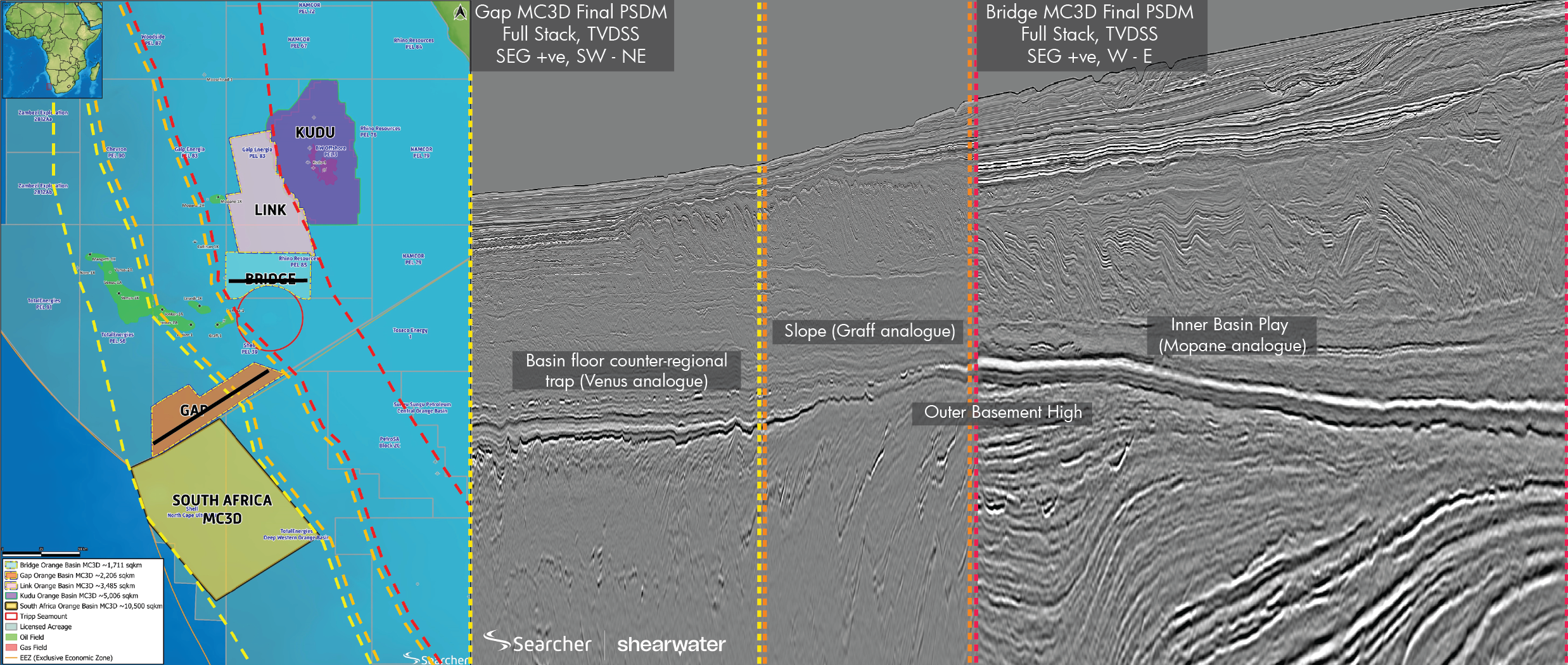
Orange Basin onset of contourite currents and associated bedforms
As can be seen in Figure 2, the Venus Basin Floor Play Fairway (yellow dashed polygon) extends into the Gap and ZA22 3D datasets acquired in 2023/24. Venus reservoir analogues and the unexpected identification of contourite influence, immediately above the Aptian source rock, have both been observed (Figure 3).
In South Africa, the RMS amplitude distribution resembles a bedform between undulatory ripples and sand dunes generated by medium velocity contourite currents and medium grain size sands. In contrast, to the north in Namibia, the amplitude distribution is more chaotic and irregular and resembles bedforms formed by higher velocity currents and associated with coarser grain size. These observations have raised questions regarding the timing of the onset of contourite currents in the basin as well as the process triggering them. The early onset could explain the outline of the Venus discovery, with sediment sourced from the east and yet the polygon aligned in a NE-SW direction (Figure 2) as if the turbidite sand had been redistributed by contourite currents, potentially leaving coarser material to the SE and finer sands to the NW.
Another bedform feature generated by contourite currents is the sediment waves generated by contourite currents. These can resemble progrades (see Figure 4) and be on a colossal scale (>500 m high in Uruguay’s Pelotas basin) and have been interpreted as aggrading slump units (ref. The PEL97 discussion in GEO EXPRO Vol. 22, Issue 2, 2025).
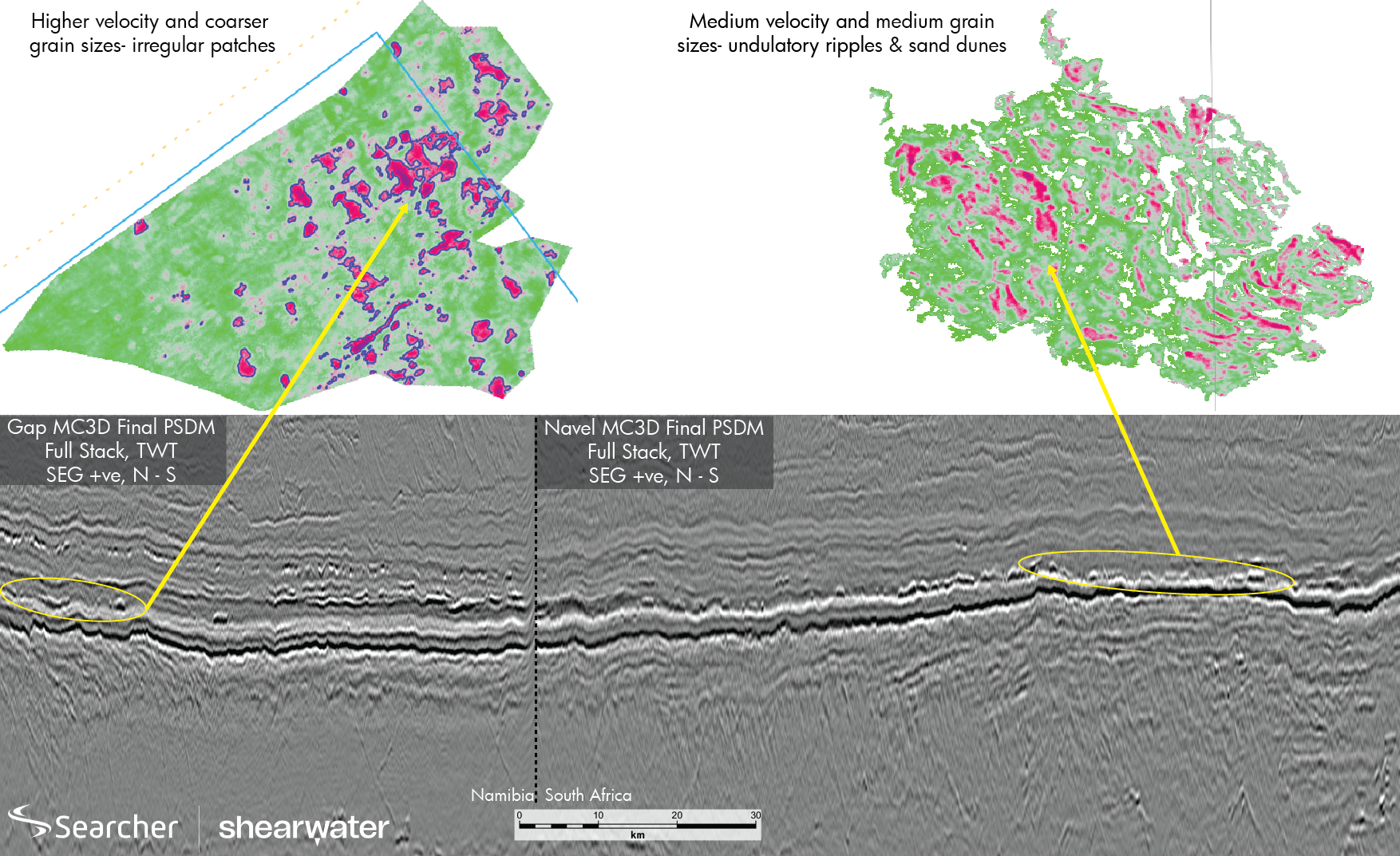
Searcher and Shearwater are in the second season of acquisition of the only multi-client 3D in the Southern Pelotas Basin. The first events overlying the source rock are characterized by continuous and extensive amplitude anomalies with AVO Type III response. RMS extractions over these events show North-South trending amalgamated channels fan complexes (see Foldout image). The North-South trend is intriguing as sediment should be sourced from the Northwest. It’s possible that the turbidites have been redeposited by contourite currents, in a similar way to the Venus discovery.
Higher up in the sequence, sand wave-like bedforms (see Foldout again) are interpreted to be associated with medium velocity contourite currents and medium grain size sands. While to the east an older fan complex seems to be unaffected by such a current.
Contourite thinking in exploration is an on-trend geoscience innovation for hipsters. If you still feel the future is far away, then as Slaughterhouse-Fives’s visionary author Kurt Vonnegut wrote, “be patient, your future will come to you and lie down at your feet like a dog who knows and loves you”. With huge mixed system fan complexes with AVO Type III response being mapped on Multi-client 3D, the future of exploration has already been written in unevenly distributed hybrid systems in both the Orange and the Pelotas Basins.

